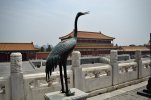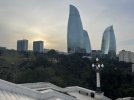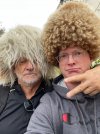JonMcD
Gold Member
- Joined
- Jan 1, 2020
- Messages
- 3,105
Thanks so much Tyler! Great photo!This little baby deer got separated from his momma. I thought he may be hurt, so I went down the hill to check on him. It's the smallest one I've seen. He actually let me pet him a couple times, but then he got up and kinda wobbled away. It was one of the best wildlife experiences I've had. I'll enter for my buddy JonMcD.
View attachment 2295229
I will return the favor for
Forbidden City in Beijing.


Baku, Azerbaijan

Azerbaijani headwear is quite fantastic. Me and my buddy having a bit too much fun.



